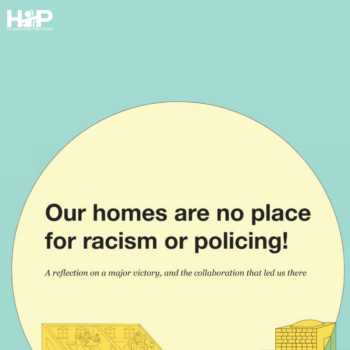
| By Amy Bush Stevens, Health Policy Institute of Ohio |
At the Health Policy Institute of Ohio, we’re committed to pushing for a health policy agenda that takes into consideration all the factors beyond medical care that shape our health. Over the past few years, we’ve been filling our toolbox with Health Impact Assessment (HIA) methods that can shine a spotlight on the inequities driving poor health and that can inform effective policies and programs that will get us to optimal health for all Ohioans.
In 2013, our organization participated in a two-day HIA training workshop led by HIP. Then, in 2015, I served on the Advisory Committee for the Stress on the Streets (SOS): Race, Policing, Health and Increasing Trust not Trauma HIA facilitated by HIP. Several lessons learned from those experiences helped our most recent project succeed, as we dove into the issue of infant mortality in Ohio…
Why is Ohio’s infant mortality rate getting worse?
Why are black babies in Ohio dying at more than twice the rate of white babies?
Why are improvements in healthcare access and quality not getting us the results we want to see?
These are some of the questions that drove Ohio legislators to call for a study of the social determinants of infant mortality. And these are the questions we pursued as we worked with stakeholders around the state to explore the many ways that factors beyond medical care affect infant health. The result was a 232-page report prepared for the Ohio Legislative Service Commission: A New Approach to Reduce Infant Mortality and Achieve Equity: Policy Recommendations to Improve Housing, Transportation, Education and Employment.
Faced with the daunting task of describing the complexity of social determinants in a way that would lead to actionable policy recommendations, we relied on several tools from the Health Impact Assessment (HIA) toolbox that we learned about through our work with HIP:
Use pathway diagrams to define scope and communicate complexity.
Pathway diagrams are commonly used in HIAs to explore, describe and prioritize the direct and indirect ways that non-health factors affect health outcomes and equity. In this project, we used pathway diagrams to illustrate the complex connections between housing, transportation, education and employment and the leading causes of infant mortality (see example below). We developed draft diagrams early in the process and then shared them with stakeholders and incorporated feedback. They were an effective way to summarize what we learned from our review of the research literature and a critical guide for developing policy goals.

Acknowledge racism and expose inequities.
The first recommendation from the SOS HIA was to “publicly recognize the historical contexts that have shaped current relationships between the public and police.” I learned from fellow members of the SOS HIA Advisory Committee that it was critical to acknowledge racism and the historical drivers of inequities. In the infant mortality report, this meant we needed to describe the impact of racism on birth outcomes and discuss the underlying structural drivers of inequities in housing and transportation, such as redlining and discriminatory rental practices that have led to residential segregation and housing instability, and transportation policies that have favored highway development and “slum clearance” over public transportation.
Make new friends from sectors beyond health.
Stakeholder engagement is a key component of any HIA. For this project, we recruited Advisory Group members from legal aid services, metropolitan housing authorities, the Ohio Department of Transportation and many other organizations that are not typically part of the health policy world. These partners brought a wealth of new ideas to the table and helped us craft specific and technically feasible policy recommendations that are aimed at the right decision makers. For example, from regional planners we learned ways that health and equity considerations can be built into zoning and development decisions at the local level.
We will continue to build upon the new relationships we forged through our past HIA experiences and increased understanding of inequities as we take on new projects in 2018. We have recently launched an expanded Equity Advisory Group for our organization, and are connecting with criminal justice reform experts from the SOS HIA to help inform our Addiction Evidence Project.




